Autumnal changes
Saturday, 18 October 2025
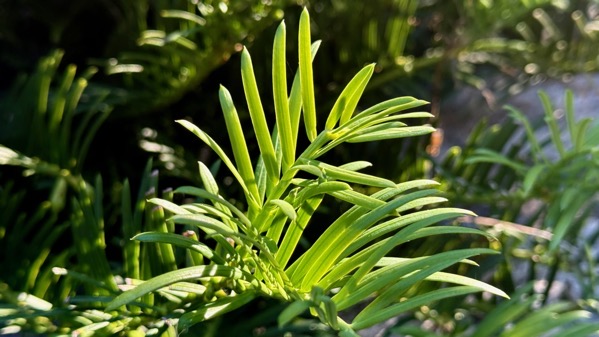
So, midmorning I swept the balcony free of leaves. At 3pm I looked out and found a new crop had recolonized it. I’m looking at you tulip poplars. [Not this taxus, or whatever it is.]
Saturday, 18 October 2025

So, midmorning I swept the balcony free of leaves. At 3pm I looked out and found a new crop had recolonized it. I’m looking at you tulip poplars. [Not this taxus, or whatever it is.]
Tuesday, 14 October 2025
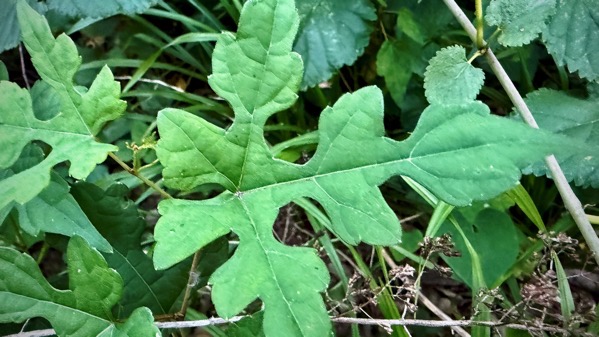
Is there a functional reason for the scalloped edges? Are edges more important than middles to the plant somehow (it’s counter-intuitive to me)? Do herbivores tend to avoid the leaves because they assume they are already nibbled?
Monday, 13 October 2025

Today, I found an anole indoors. Does this happen every autumn? Something like that. I gently captured it and released it outdoors. Good outcome. [I am mystified as to how they get inside.]
Last week, on our way up to Lake Superior, we were slow-motoring on a sand road through the visual mosaic of leaf color and sun-n-shade when what should appear on the hood just past the wipers but a mouse. It must have come from an open area at the base of the wipers. Up on the hood, it had little traction, and I hit the brakes hard and zip, it flew off the hood forwards, and I saw it run into the ditch to the left. Another good outcome.
Tuesday, 7 October 2025
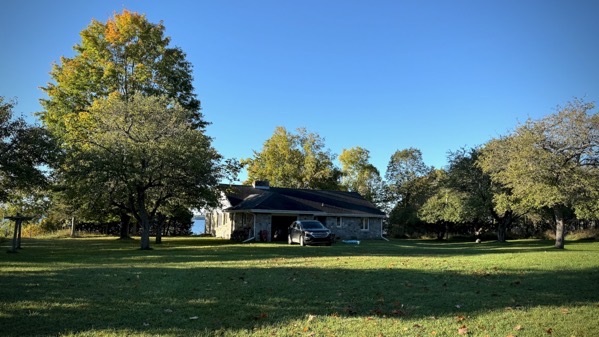
On my early walk, I saw our nearest neighbors working on exiting. Sigh.
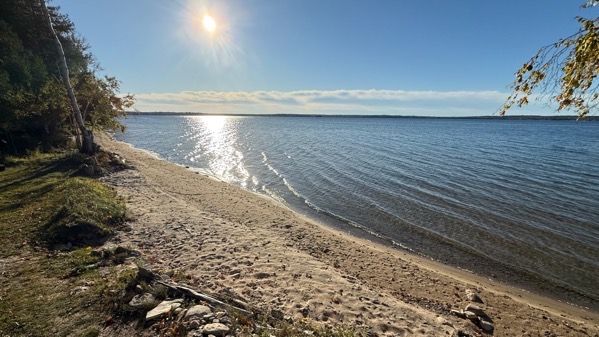
At the beach, the sun glowed warmly, nurturing life.
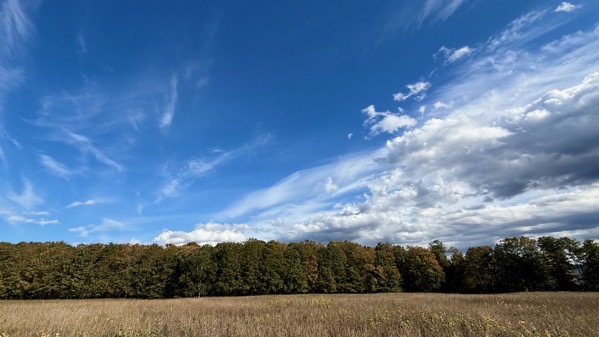
Here’s the afternoon sky, and you can see the leaves are slowly turning on the face of the woods. [It’s much quieter, it seems, with the neighbors gone.]
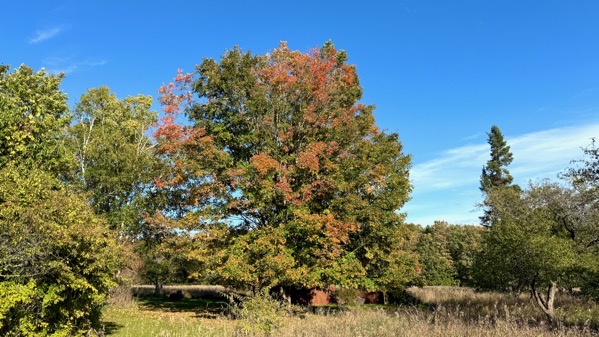
Meanwhile, the Uncle Dave maple is turning faster.
Friday, 26 September 2025
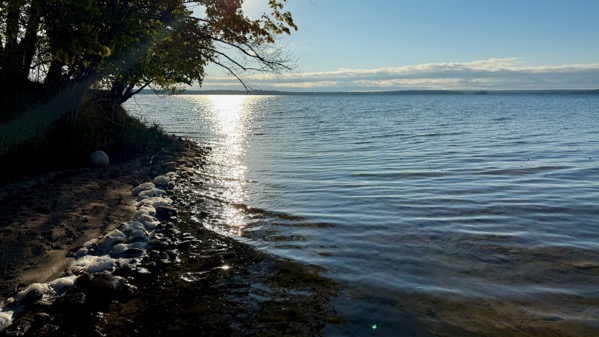
The sun’s up. This is 9:03am…the view past the point. Changes in latitude….
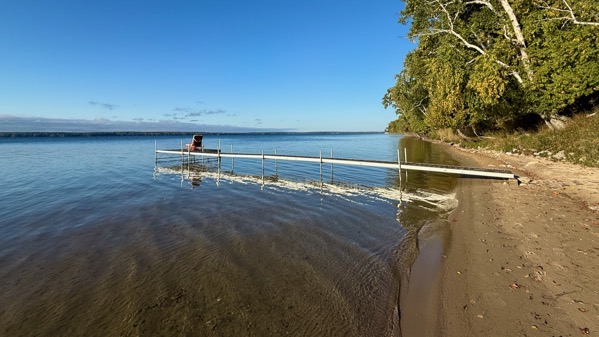
Rotate 180°, and walk a bit: here’s the view with the sun.
What’s remarkable in this pair of photos, compared to our last visit, is the lack of haze from the smoke. No smokiness whatsoever. Yay!
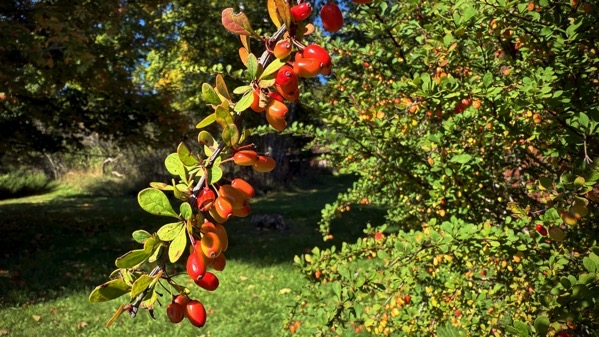
The barberries are so colorful for autumn. It’s not just leaves.
Thursday, 18 September 2025

Ivory Wee-Goat looks rather demented here, but is merely curious about me and my phone-camera poked in his face. In other news…
Earlier, I watched a different goat stand next to this fence and stretch his neck up, and I couldn’t figure out why. Then, I saw him extend his tongue and snag a fresh leaflet snagged on the fence-mesh and understood.
Sunday, 31 August 2025
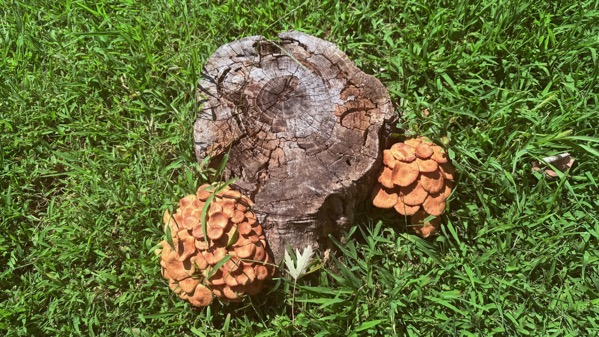
I made only lousy goat-photos today, so here’s a stump with fungi—illustrating breakdown eco-processes.
Wednesday, 27 August 2025

I was relatively busy today, but nothing to remark on. Leftovers (so no cooking, yay). [Apologies for the delayed post….]
Wednesday, 20 August 2025
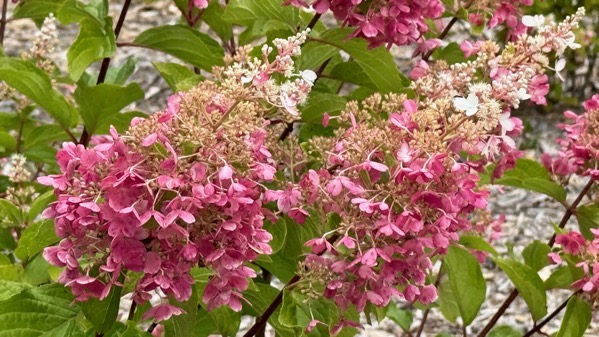
This bunch is leaning toward the light. I feel like I’m doing that now, as the dark has arrived early…accompanied by thunder and precipitation…whatta surprise (remember yesterday).